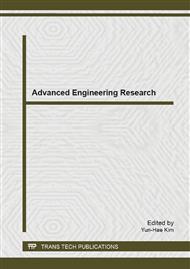p.86
p.90
p.94
p.98
p.103
p.108
p.114
p.122
p.126
Verification of the Applicability of Seismic Safety Evaluation Program LSSRLI-1 in Medium Soft Soil Using Exact Solution
Abstract:
The equivalent linearization program LSSRLI-1, proposed by Xiaojun Li in 1989, is the important content in seismic zoning work and seismic safety evaluation of engineering sites. It is necessary to check the applicability of LSSRLI-1 to all kinds of sites. The mainly elaboration of the paper is using exact solution to verify the applicability of seismic safety evaluation program LSSRLI-1 for medium soft soil. Previous research has already demonstrated that the shear strain in stiff and half-stiff sites calculated by LSSRLI-1 and the exact solution are about the same, have an almost identical shape. The distribution of shearing strain in different depths calculated by the two methods has the same set of characters, and the difference between the two methods is small, if any, can be ignored in an acceptable range. In this paper, however, the results calculated for the discrepancy of shear strain between LSSRLI-1 and exact solution in medium soft soil has a very significant impact on the surface response spectrum, leading to prominent diversity to the response spectrum.
Info:
Periodical:
Pages:
103-107
Citation:
Online since:
April 2014
Authors:
Price:
Сopyright:
© 2014 Trans Tech Publications Ltd. All Rights Reserved
Share:
Citation:


